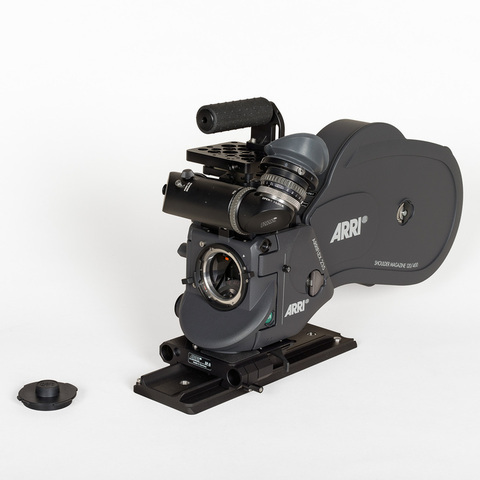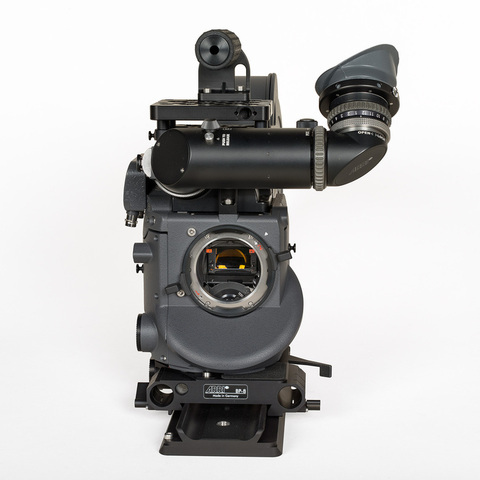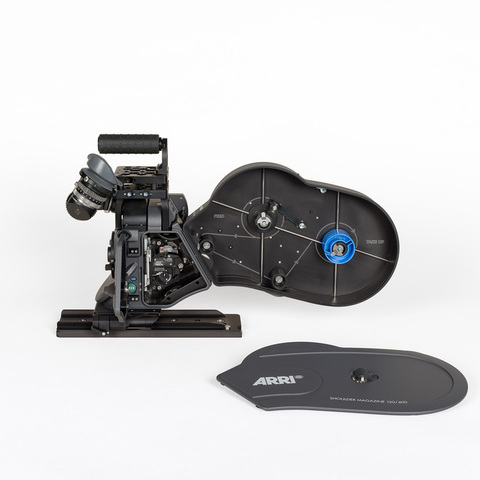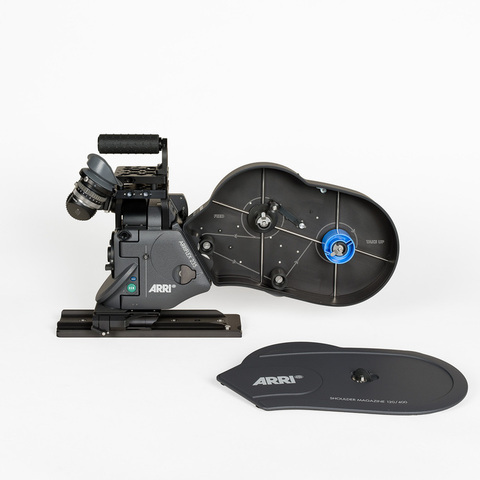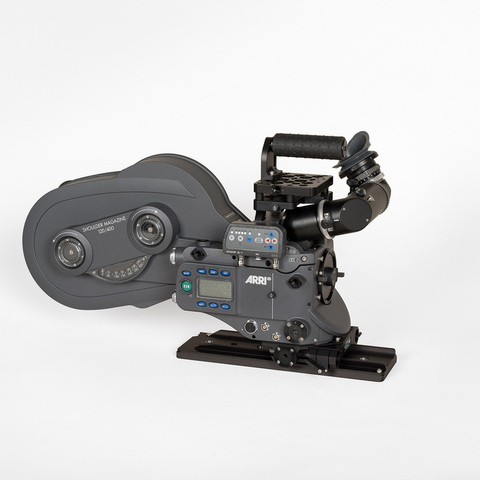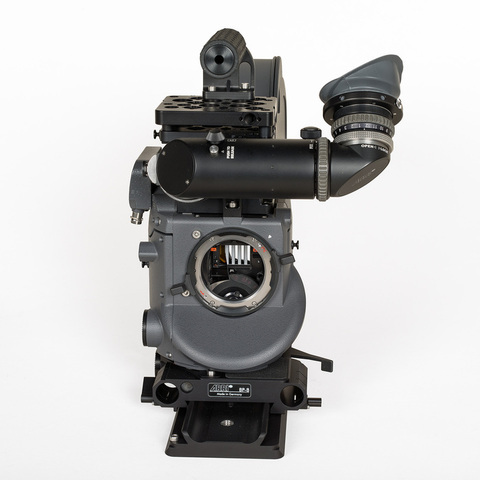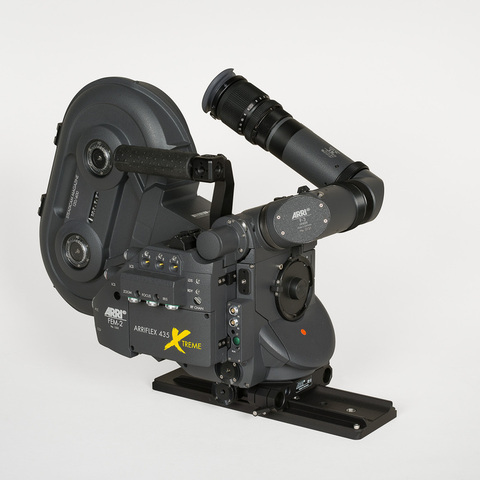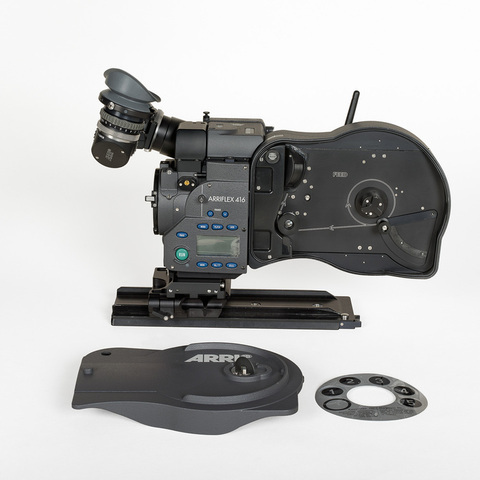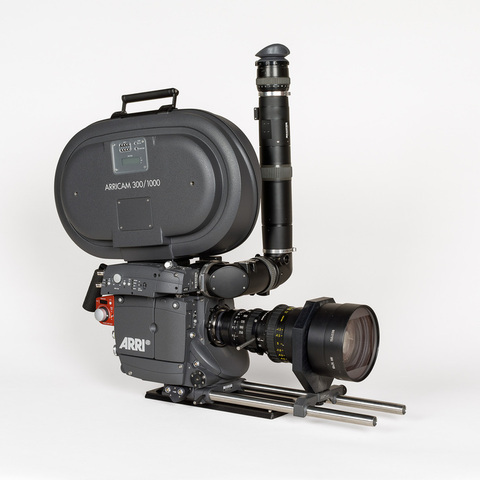Caméra film 35 mm
Fiche détaillée
Type de l'appareil
entraînement du film 35 mm ou super 35 mm par une griffe et une contre-griffe pour 3 ou 4 perforations ; prise de vues de 1 à 60 images par seconde contrôlé par quartz ; moteur électronique 24 v ; miroir obturateur électrique réglable de 45° à 180° ; visée reflex électronique gauche ou droite ; video-assist intégré ; time-code ARRI ; tableau de commande LCD ; magasin shoulder magazine débiteur et récepteur 120 m ; poignée
Auteurs
Kehrer Klemens
Munich
Fabricants
Arnold et Richter Arriflex
Munich, Türkenstrasse 89
Utilisateurs
Kehrer Klemens
Munich
Distributeurs
Arnold et Richter Arriflex
Munich, Türkenstrasse 89
Sujet du modèle
Informations non disponibles
Objectif
Informations non disponibles
Taille de l'objet
Ouvert :
Informations non disponibles
Fermé :
Longueur : 54 cm
Largeur : 23 cm
Hauteur : 32 cm
Diamètre :
Informations non disponibles
Taille de la boîte de transport
Informations non disponibles
Remarques
Marques : "ARRI ARRIFLEX 235".
Don de la firme ARRI, Munich, 2017.
"In June 2004 at the ASC Clubhouse, Arriflex introduced a little brother of the highly advanced 435 and 535 35 mm camera systems. Called the Arri 235, the small, lightweight MOS camera was designed specifically for handheld use, various rig mounting and other specialized applications such as underwater and aerial photography. It complements the larger, more complex 435 system as a "grab and go" C camera - and it is smaller and nearly 2 pounds lighter than the Arri 35-2C. In fact, with a 2C 200' magazine mounted onboard, the 235 is almost the same lenght as an Aaton A-Minima Super 16 mm camera. "The Arri 235 is a modern version of the Arri 2c", says Arri vice-president Bill Russell. "We wanted to build a camera that was small, lightweight, simple to use and relatively inexpensive. Cameras are our lifeblood, and a film camera of this type really takes us back to our roots". The Arri 235 supports the Super 35 mm format, as well as 3-perf-style shooting. The viewfinder is spherical, but an anamorphotic viewfinder is in the works. The body has the Arri-standard 54 mm PL, but a Panavision mount can easily be fitted. The camera uses 435 ground glasses, and the control panel, video-assist controls and threading method resemble its big brother's counterparts. (...) The single-pin registration and single, two-pronged pulldown claw movement were derived from precision X-ray cameras that Arri had under development but never built. Shutter range is mechanically, not electronically, adjustable from 11,2° to 180°. (...) The Arri 235 will be available in October and will find its way Stateside by the end of the year" (American Cinematographer, août 2004, p. 90-91).
"The Arriflex 235 is a small and lightweight 35 mm MOS camera designed for hand held and remote applications where size and weight are crucial. The 235 is the ideal camera for Steadicam use, car rigs, motorcycle rigs, bicycle rigs, underwater applications, crash housings, aerial photography, etc. (...) It's body and viewfinder weigh about 3,5 kg, which is half the weight of a 435 body and viewfinder. A smaller, lighter camera means you can work faster, it means less rigging and lighter support equipment. (...) Despite its compact exterior, the 235 is thoroughly modern motion picture camera, equipped with all the features cinematographers, producers and crews have come to expect, including Super 35, a 3 perforation option and a high quality video assist. A bright and ergonomic optical viewfinder can be freely rotated and extended just like the ARRICAM or 435 viewfinders. The viewfinder is accompanied by a video assist of the same image quality and features as the highly praised ARRICAM and 435 video assist. A new and unique optical design makes viewfinder and video assist independent of each other, so a switch from hand held to Steadicam mode is lightning fast and there is no need for a 100 % video top. (...) To allow rental houses and crews to work with the existing and familiar inventory of equipment, the 235 is compatible with the vast majority of 35 mm production gear, including all PL mount lenses, the ARRI Remote Control Unit (RCU), Wireless Remote Control (WRC), Iris Control Unit (ICU), Electronic Synchronization Unit (ESU) and the ARRI Wireless Remote System. For simplicity's sake the 235 uses 435 ground glass" (ARRI Arriflex 235, München, Arnold & Richter Cinetechnik, s.d.).
"The Arriflex 235 is a tiny, lightweight, 35 mm motion picture camera not buch bigger than a MiniDV Camcorder. It looks like an oversized sausage or baby dolphin sitting on your shoulder. This could be the most confortable shoulder-resting, handheld camera since Jean-Pierre Beauviala enticed us with AATON ads of a black cat sitting comfortably on a cinematographer's shoulder. [...] For handheld, I highly recommend the new 200'/60 m and 400'/120 m (available May 2005) shoulder magazines. They have a low center of gravity, are steady, light and very confortable" (Jon Fauer's Film and Digital Times, may/june 2005, issue 1, p. 7-13).
"After two years of intense research and development work we are proudly unveiling our latest film camera, the ARRIFLEX 235. It is a small and light-weight 35 mm MOS camera designed for hand held and remote applications where size and weight are crucial. The three main features of the 235 are its size, price and weight. To give you a general idea : the 235 is roughly half the size of an ARRIFLEX 435, half the weight of the 435 and body and viewfinder are also roughly half the price" (ARRI News, septembre 2004, p. 8-9).
"When we were approached by our subsidiaries with the wish for a small and lightweight camera", says Marc Shipman-Mueller, Technical Marketing Camera, "we saw that it would fit very nicely into our existing product palette. After we drew up first designs, we organized focus groups with cinematographers, assistants and rental houses to discuss what key features such a camera should have. We also worked closely with the ARRI rental houses and our subsidiaries, utilizing their combined experience and know-how. The positive feed-back from these meetings convinced us that we were on the right track, and the meetings further revealed that there were three main factors considered vital for the success of this camera : size, price, and weight. Cinematographers liked the idea of a "grab camera", a small camera that could easily be deployed, but they insisted that it had to be as small as possible, maybe even smaller. In fact, they wanted a 35 mm camera the size of an A-Minima ! The price was also identified as an important factor" (...). Klemens Kehrer, 235 Project Manager rolls his eyes : "When we looked at the target specifications resulting from those meetings, we realized that this would not be possible unless we also took a serious look at the way we develop and manufacture this camera. The only way, for instance, that we could reach the price point was to re-use a number of already developed parts from existing cameras. Luckily, we had designed a lot of our recent projects in a modular fashion, so we were able to adapt existing components. The 235 processor, for instance, is the same as in the 435 FEM-2, so we were already intimately familiar with its functions. And the 235 software is a scaled down version of the 435 FEM-2 software, which of course works great with the 235 display, which is very similar to the 435 display. All this brought us closer to meeting our price point. As luck would have it, the abandoned work on a previous camera had resulted in a usable movement design. "When we looked at those movement specs", ads Walter Trauninger, head of the business unit camera, "we realised that the movement would be perfect for the 235. With some modifications and a lot of testing, this movement turned out to be perfect for the 235. This of course meant that we did not have to develop a movement from scratch". Marc Shipman-Mueller points to some early design drawings : "The design process was really interesting. Everything we do is first constructed in a state of the art 3D CAD environment, so if we had an idea during a meeting in the morning, a half hour later one of Klemen's guys would show up with a realistic 3D rendering. For the focus groups and some meetings later we had plastic models built, using rapid prototyping techniques. It really makes a difference when you can hold an item in your hand instead of staring at a piece of paper. The basic design that was decided on, dubbed the dolphin, wes rendered at three different stages in plastic". At the same time as the shape of he camera went through various design changes, a functional model was built to test mirror shutter and movement. [...] Looking over the old design drawings spread out on the table, Klemmens Kehrer reminisces : "This was a fun project, since we had a clear goal and were able to check in with cinematographers and assistants whenever we had questions. I hope our customers have as much fun using the camera as we had building it" (Marc Shipman-Mueller, "Developing the ARRIFLEX 235", ARRI news, september 2004, p. 12-13).
"Academy Sci-Tech Awards for ARRIFLEX 235 and WRS System. Klemens Kehrer, Josef Handler, Thomas Smidek and Marc Shipman-Mueller were honored for the design and development of the ARRIFLEX 235. [...] The 235 wes recently used on the films Children of men, Letters from Iwo Jima, King Kong and The Island. Kehrer, the Project Manager for the 235, thanked the Academy and acknowledged the team behind the innovative design and engineering of the ARRIFLEX 235. "There should really be a group of 15-20 people standing with me here on stage accepting this award" (ARRI News, avril 2007, p. 14).
Bibliographie
American Cinematographer, août 2004.
ARRI Arriflex 235, Instruction Manual, München, ARRI, november 2004.
ARRI Arriflex 235, München, Arnold & Richter Cinetechnik, s.d.
Jon Fauer's Film and Digital Times, may/june 2005, issue 1, p. 7-13.
ARRI News, septembre 2004, p. 8-9.
ARRI News, avril 2007, p. 14
